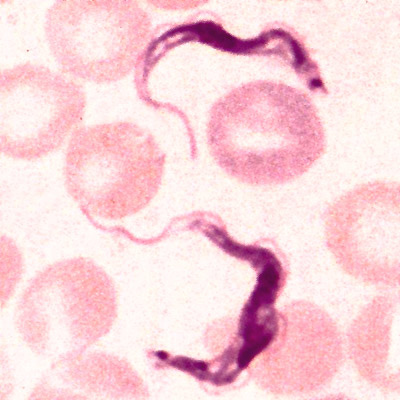Trypanosoma brucei
Articles that lack this notice, including many Eduzendium ones, welcome your collaboration! |
Classification
Higher order taxa
Kingdom: Protista
Phylum: Sarcomastigophora
Class: Zoomastigohora
Order: Kinetoplastida
Family: Trypanosomatidae
Genus: Trypanosoma
Species
Description and significance
[Describe the appearance, habitat, etc. of the organism, and why it is important enough to have its genome sequenced. Describe how and where it was isolated.
Include a picture or two (with sources) if you can find them.]
Trypanosoma brucei is a unicellular parasitic organism with no true tissues. It belongs to the protista kingdom and therefore has cell structures that are similar to the cells of many eukaryotes. T. brucei has no definite shape, it is mobile and has a single flagellum attached to the cell body.
T. brucei is often found in the rain forests and savannas of Africa, causing the disease called African trypanosomiasis (sleeping sickness). Most cases of African trypanosomiasis are found in regions with tropical climate.
Genome structure
Describe the size and content of the genome. How many chromosomes? Circular or linear? Other interesting features? What is known about its sequence? Does it have any plasmids? Are they important to the organism's lifestyle?
Cell structure and metabolism
Describe any interesting features and/or cell structures; how it gains energy; what important molecules it produces.
Ecology
Describe any interactions with other organisms (included eukaryotes), contributions to the environment, effect on environment, etc.
Pathology
How does this organism cause disease? Human, animal, plant hosts? Virulence factors, as well as patient symptoms.
Current Research
Enter summaries of the most recent research here--at least three required
